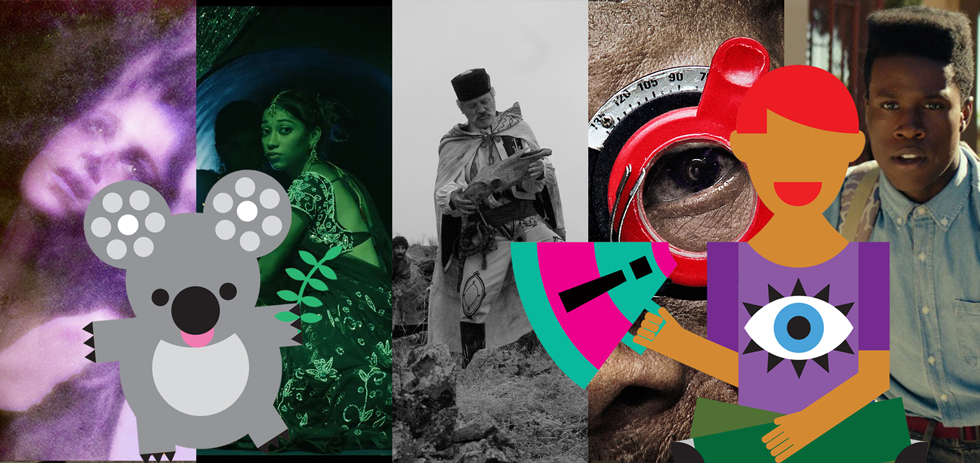This year’s Sydney Film Festival is packed with a mass of interesting films, both international hits and hidden gems. In this Staff Picks piece, our writing team goes through the festival program and picks out some of the films they are most excited to see this June, with enough picks here to fill two Flexi20s.
Conor Bateman: It’s been six years since a Guy Maddin film graced a screen at the Sydney Film Festival, with his wonderful My Winnipeg playing in the inaugural competition in 2008.1 The Forbidden Room breaks the drought and looks to be one of the biggest films, if not the biggest, of Maddin’s career. Premiering at Sundance earlier this year and thereafter making its way to the Berlinale, the film has garnered rave reviews for its stunning technicolour interpretation of lost silent film shorts, the film a tangential evolution from Maddin’s long-gestating Seances project.2 The Forbidden Room also marks Maddin’s first co-directed feature film, helming it with former student Evan Johnson, who started working on the Seances project as a researcher of lost films.3 The official plot description for the film is wonderfully Maddinesque – “A never-before-seen woodsman mysteriously appears aboard a submarine…” – and the cast have been plucked from his Seances project (so a few exciting performers don’t look to have made this feature, notably the wonderful Ariane Labed), but those who are here are still an impressive bunch, with Mathieu Amalric, Udo Kier, Maria de Medeiros and Charlotte Rampling among others.
Last year the startlingly talented Bong Joon-ho brought his (disappointing) latest feature, Snowpiercer, to the festival and in 2015 the programming team have doubled down on his work. Joon-ho co-wrote and produced Haemoo, directed by Shim Sung-bo (who in turn co-wrote Memories of Murder), which follows a fishing boat smuggling a group of Koreans in China out of that country and to South Korea, where they can start anew. From all accounts it’s a very tense thriller, and its programming in MoMa’s New Directors/New Films series earlier this year places it in good company.4 Also showing, surprisingly in the retrospective section (2009 really isn’t that long ago), is my favourite of Bong Joon-ho’s films, the novelistic crime drama Mother, which sees a mentally handicapped teenager arrested for murder by local police without evidence and the search for truth by his mother, played perfectly by veteran actress Kim Hye-ja. The screening at the festival this year is special, and in the retrospective section, because of an interesting quirk – the film is playing in black and white, in a new version of the film prepared for the 2013 Busan International Film Festival.5
Jessica Ellicott: A personal highlight of SFF 2014 was the mini retro of American experimental filmmaker James Benning, and this year that same retrospective fix can be got from the small but perfectly formed Destruction Cinema program. It’s the brainchild of guest programmer Chris Fujiwara, whose credentials include being the author of books about Jerry Lewis and Jacques Tourneur, bassist of 90s post-rock outfit Cul de Sac and, most recently, artistic director of the Edinburgh International Film Festival. Those looking for something a little different would be well served taking a punt on any of the five anarchic ‘anti-masterpieces’ on offer. Film fetishists will be also pleased to hear that both Jackie Raynal’s Deux Fois and Rogério Sganzerla’s The Red Light Bandit will be shown on 35mm prints.
Another intriguing, albeit unofficial side section comes in the form of three films from Austrian filmmaker Ulrich Seidl, whose Paradise trilogy people may remember for injecting a serious dose of austere, precisely framed freakiness into the SFF 2013 program. His presence was missed at the festival last year, while I guess we had to allow time for him to make something else. This year, all your deeply disturbing Seidl Christmases have come at once. His latest film In the Basement screens alongside the documentary Ulrich Seidl – A Director at Work (which follows Seidl in the process of making In the Basement), as well as the horror film Goodnight Mommy, which he produced and his wife Veronika Franz co-directed.
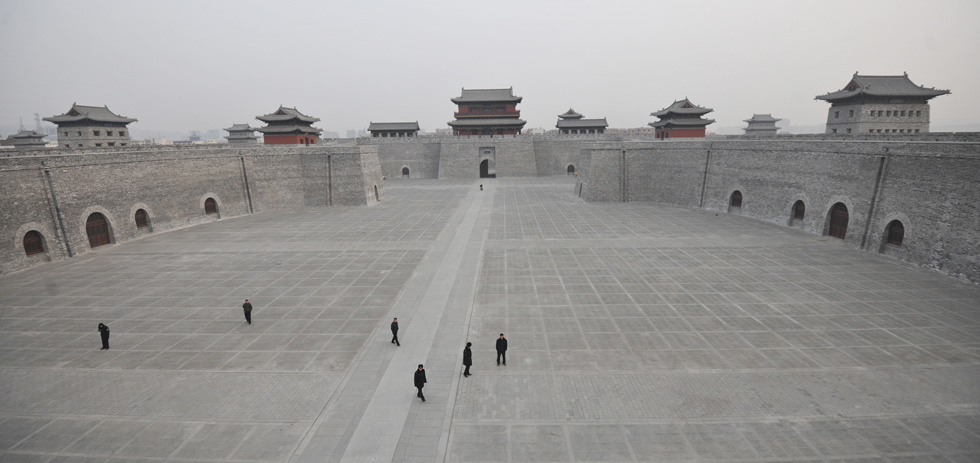
Jeremy Elphick: In 2013, there wasn’t any competition for me: The Act of Killing was the masterpiece to take away from the festival that year. Its only flaw was the exclusion of the voices of those who survive – those who emerged from the web of unimaginable pain weaved by the ‘gangsters’ documented in Oppenheimer’s first film. In The Look of Silence, which focuses on the other side of the coin (those aforementioned survivors), this is nullified. In reading about the latter documentary, talking with Oppenheimer about it and watching the trailer, it’s clear that this is a much gentler film. It’s unlikely that we’re going to see the same feverish experimentalism that defined The Act of Killing, but it’s very likely we’re going to see something equally as important. In the former film, Oppenheimer places the audience in a position to empathise with the killers. In this, that empathy is likely to be stretched to its limits – the audience’s perception of guilt and trauma is likely to face the same treatment.
From What Is Before took out the main prize at Locarno Film Festival and screened strongly in Toronto later in 2014. What’s more is that the latest film from Lav Diaz is 338 minutes long. It doesn’t present itself as a winding and intricate narrative, however, but instead a focused study of the Philippines before and during the emergence of Ferdinand E. Marcos and the introduction of Martial Law. It looks like a slow burner and to add to this Diaz has requested that no interval be given in the screening of the film (unlike Arabian Nights, which is around the same length and divided into three screenings). It’s rare to have a cinematic experience like this on offer in Sydney. With the reception the film received overseas, alongside the strength of Diaz’ previous film Norte, the End of History, it’s definitely one to catch.
Off the back of its run at Sundance this year comes the left-field documentary The Chinese Mayor, which looks at Geng Tanbo, the Mayor of Datong in China’s Shanxi province. In particular, the documentary sets its gaze on Tanbo’s attempt to transform the city through a mixture of reformism and sentimentalism. Both yearning for the former glory of the city while seeking to shift its current institutions, Tanbo faces oppositions from the working and ruling classes present in Shanxi and, throughout the documentary, is faced with the task of mediating between them. There are few documentaries on less prominent Chinese cities available in the West. In The Chinese Mayor, Zhou Hao offers a fairly comprehensive and visually stunning chance to glance into one of the more enigmatic leaders in China and one of their less accessible cities with a rare intimacy and detail. Having glanced at a few of the stills from this, it definitely looks like one to catch in cinemas.
Imogen Gardam: Timothy Conigrave’s memoir Holding the Man is heartbreakingly beautiful – in 2006, it made for a heartbreakingly beautiful play when adapted for the stage by playwright Tommy Murphy. The combination of Conigrave’s book, Murphy’s screenplay, and direction by Neil Armfield promises to be an incredibly potent mix. In adapting the film, Murphy returned to the book rather than adapting from his play, but the book is infused with theatricality – in David Berthold’s introduction to the play, he notes that Conigrave himself called sections of the book “scenes” in early letters to his publisher. The play uses and moulds theatre as a form throughout to render the full breadth of the narrative, from puppets to fluid scene changes, monologues becoming duologues, workshops becoming internal madness. I’m fascinated to see how this will translate on-screen.
Another title to look out for is Bill Pohlad’s Love & Mercy, the Brian Wilson biopic. Since screening as a special presentation at Toronto, the film has already met with a promising critical response, and has been said to take an interesting approach to biographic representation. I’m curious to see if it can stand up to its own hype.
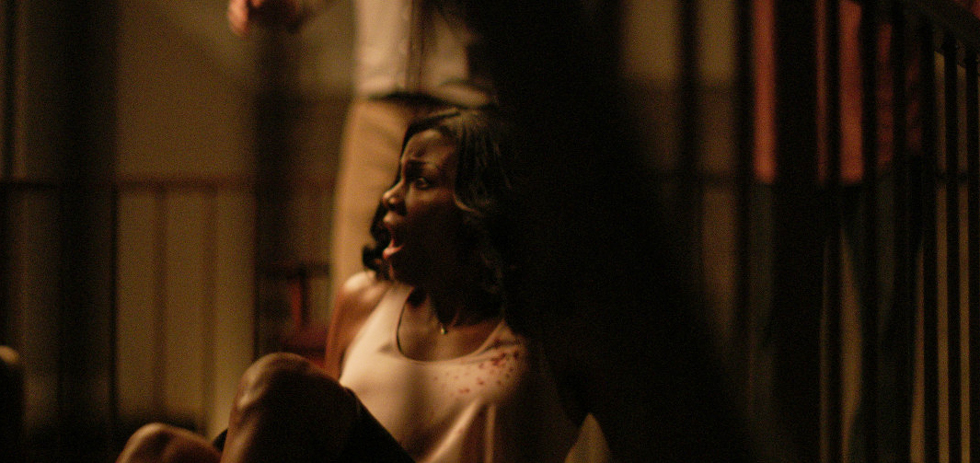
Felix Hubble: As a massive fan of Karyn Kusama’s previous film, the Diablo Cody (Juno, Young Adult) penned Jennifer’s Body, I am beyond excited for her return to cinema after a 6-year hiatus with The Invitation. In what is sure to be a fun little B-movie thriller, the film follows Will (Logan Marshall-Green), who returns to his old house for dinner with his ex-wife Eden (Tammy Blanchard) and her new partner David (Michiel Huisman), as he develops the feeling that they have ill intentions for him and their other guests. On the strength of Jennifer’s Body I have been avoiding any further information, so take this recommendation with a grain of salt, but from what I’ve seen so far it looks to be a heck of a good time, and will serve as a nice warm-up before the release of XX, the all-female, all-horror anthology (featuring shorts from Jennifer Chambers Lynch, Mary Harron and Kusama herself, among others) coming out early next year.
I’m also keen to check out Larry Clark’s new feature The Smell of Us, if only to see what’s been going on in the mind of one of American Indie cinema’s most controversial figures who has withdrawn from the limelight since around the time that Bully was released, especially since Harmony Korine, his one time collaborator on Kids and Ken Park, has now undoubtedly surpassed him in terms of fame with his own Gummo and Spring Breakers cracking the underground mainstream. The film looks to rehash a lot of his focus on youth cultures and subversive behaviour (this time with Parisian youth) so it’s sure to lead to a bunch of walk-outs and will probably be pretty gross,6 but I can almost guarantee it will be an interesting festival experience.
My pick from the Documentary Australia Foundation Award selection has to go to Tyke Elephant Outlaw, a film that explores an event that took the debate over the use of animal performers into the mainstream in 1993 as Tyke the Elephant broke free from their trainer during a performance, trampling them to death in front of thousands of spectators, before going on a rampage in Honolulu and getting gunned down. Unlike previous, similar incidents, this was the first major case of an animal performer going rogue that was entirely caught on tape. Susan Lambert and Stefan Moore track down people who knew the trainer, those who saw the events unfold, and others to explore this massive incident that became a catalyst for widespread debate (predating stuff like Blackfish). It sounds like pretty fascinating stuff, and although it’s yet to be seen whether they pull the documentary off, this looks as though it could be a stand-out entry into the program, along with The Bolivian Case (the story of three Norwegian teens who were caught smuggling cocaine in Bolivia), Gayby Baby (a look at the lives of four same-sex families with kids), and Only the Dead (the story of a journalist who had plans of an attack leaked to him by an Al Qaeda leader).
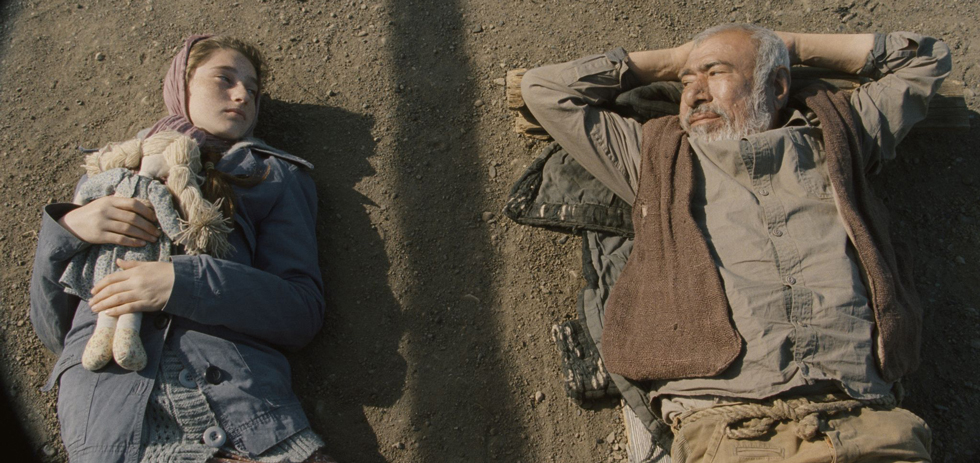
Matilda Surtees: Apparently director George Ovashvili spent years looking for the right island to film Corn Island on, before deciding to just build his own pair of barren islands instead. That is, he built two islands to meet his different demands for how the landscape would look onscreen. The would-be excesses of such production seem to be accompanied by a restraint elsewhere: ‘minimal dialogue’ is the promise of the first line of the official festival blurb. The combination appears to result in rigour, rather than extravagance, in the film-making. The titular island is nestled into the flows of the Enguri River, which acts as a border between Georgia and the disputed territory of Abkhazia. Corn Island seems to share themes with Ovashvili’s last film, The Other Bank, which was also about borders and national tensions, yet the immersive setting of the border-river offers something unique: the river must be both a dividing line and its own place. Along with the promise of incredible cinematography, the film suggests itself as a portrait of fraught coexistence between both humans and nature, bordering states, and the three human protagonists – grandfather, granddaughter and an unknown injured soldier – navigating personal and politicised tensions.
Somewhat depressingly, the easiest interest-hook for Sean Baker’s Tangerine seems to have been that the film was shot entirely on iPhones. More interesting is the possible reasons why: a low-budget, certainly, but also the fact that shooting on an iPhone makes filming a much more inconspicuous endeavour, allowing shooting in public spaces that would otherwise have required permits and diminishing the mediation between camera and location. Of course, most exciting of all is not how but what: Tangerine seems to be a rare feature about friendship, love and tension at the social margins that doesn’t veer towards becoming an exhibition of oppressed people’s pain. It’s a comedy as well as a drama. The entire film unfolds over the course of the day, promising an engaging pace and a firm sense of setting and locality. Sin-dee is just out of jail, it’s Christmas Eve, and she’s trying to track down her boyfriend – also her pimp – after discovering her best friend, Alexandra, who accidentally tells her about his infidelity. The two leads, Alexandra and Sin-dee, are transwomen, and their friendship seems to comprise both the emotional and comedic heart of the film. Premiering at Sundance, set for limited theatre release in the US and now part of the SFF Official Competition selection, Tangerine is one of the most exciting entries in this year’s line-up.
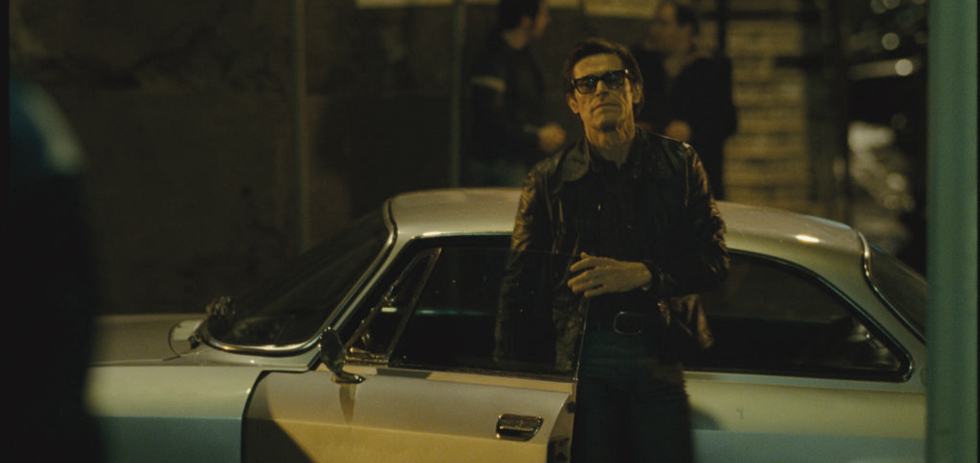
Brad Mariano: The death of Manoel de Oliveira earlier this year was a great loss to world cinema, and especially for the national cinema of his native Portugal, where he had made films across a staggering nine decades. Compatriot Miguel Gomes however has been doing his best to keep Portugal in the world cinema spotlight over the last few years and returns with his epic tripartite Arabian Nights, a six-hour odyssey across modern Portugal, told in segments similar to the Scheherazade legend. That’s really as much as we know outside of some beguiling stills, as the film screens for the first time as part of Directors’ Fortnight at Cannes. Gomes’ earlier Tabu (SFF 2012) plays similarly outside usual film form, a two-parter memorably shot in black-and-white and in 4:3 aspect ratio. It was a touching, elegiac film that was also a major critical hit. Arabian Nights is clearly the most ambitious work from a major new voice in world cinema, and it’s hard to not see it as the crown jewel in SFF’s terrific 2015 (and Official Competition) line-up.
Gomes is not the first filmmaker to tackle the Arabian Nights legend, filmed more literally in 1974 by the legendary Italian iconoclast Pier Paolo Pasolini, a film of earthy sensuality and striking power that is one of the more controversial films in a career full of them. Abel Ferrara’s don’t-call-it-a-biopic Pasolini is one of my most-awaited films of the year, a tribute to a groundbreaking filmmaker/writer/poet/intellectual which also unfolds as a speculation as to what may just have happened in the mysterious circumstances surrounding his violent death, and includes the saga surrounding the production and release of one of the most scandalous films ever made, Salò, or the 120 Days of Sodom.7 A film that seems to be buried deep in the program at risk of being overlooked, it’s one of the most interesting projects for me in this year’s selection, not least for the casting – that Willem Dafoe makes some inspired script choices isn’t news to anyone, but his sheer resemblance to the late auteur is so uncanny that it feels like a role he was destined to play.
Dominic Ellis: There are a few small-scale attractions in the Feature section this year that probably won’t get the buzz they deserve (please go and see the brilliant These Are the Rules), but I’ll concentrate my efforts on Freak Me Out given it’s only had one mention thus far. I’m a sucker for genre, and the self-described ‘Heavy Metal Splatter Horror Film’ Deathgasm is the de facto Freak Me Out headliner this year. Coming off the back of SXSW where it was inexplicably (and unanimously) praised, Deathgasm is the midnight movie to end all midnight movies, following a pair of metalheads who unintentionally summon an angry supernatural creature. I’m aware that expectation could very easily numb the effect of a film that’s so dependent upon sheer absurdity, but I’m no less excited by this bloody blender of metal and gore.8
The second genre flick coming out of New Zealand – which in itself is a pretty striking achievement – is Turbo Kid. Sharing some production credits with Deathgasm (including SFF guest Ant Timpson), Turbo Kid also shares its sibling’s outrageousness. A perfect companion piece to George Miller’s latest Mad Max, and latching onto the same nostalgia that made Buzzard a hit at MIFF last year, this homage-heavy comedy seems unapologetically fun.
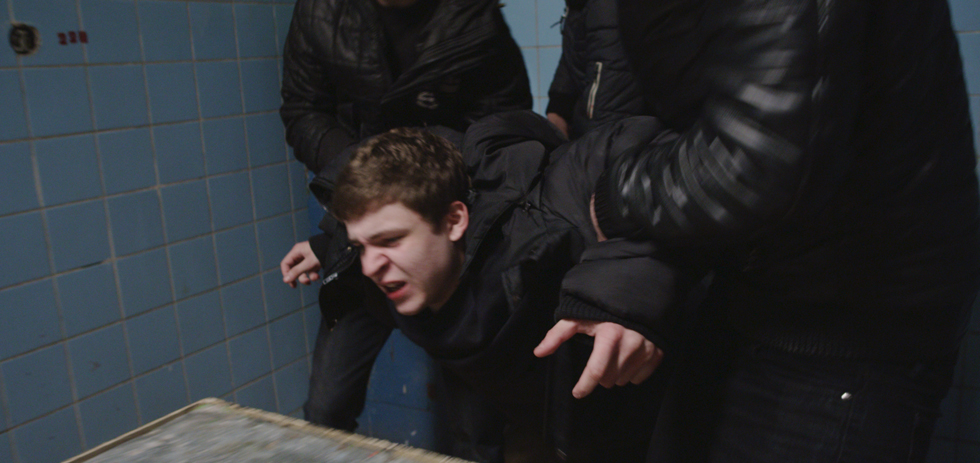
Isobel Yeap: The Tribe, directed by Myroslav Slaboshpytskiy, promises to be a fresh and radical film. It’s about a boy who attends a boarding school for deaf children, where he becomes involved in the underground scene of organised crime, robbery and prostitution. The characters communicate in Ukranian sign language with no subtitles. After premiering at Cannes last year, The Tribe has been shown at a number of festivals around the world to much critical acclaim.
I’m also looking forward to Austrian film Goodnight Mommy, a psychological horror film from co-directors Severin Fiala and Veronika Franz about two nine-year-old twins, Lukas and Elias (Lukas and Elias Schwarz), living with their mother (Susanne Wuest) who is recovering from cosmetic surgery. The boys begin to suspect there’s something wrong with their mother. They don’t recognise her with her face raw, puffy and obscured by gauze, and soon they begin to suspect that she may in fact be a stranger who is out to get them.
Finally, Dope looks like a fun film. It stars Shameik Moore as Malcolm, a 90s hip-hop geek whose dream is to get into Harvard. He and his geek friends find themselves accidentally embroiled in a drug plot, where they have to sell a stash of drugs in order to survive. Dope promises some fast-paced laughs in the style of 21 Jump Street. It also stars A$AP Rocky as a drug dealer and lists Puff Daddy and Pharrell Williams as its executive producers.
Dominic Barlow: SFF has noticeably stepped up its programming of animated films from previous years, with three distinct showcases covering experimental, international and children’s shorts. This is on top of the Yoram Gross award handed out during the Dendy Awards, and the big-name feature slot that is normally filled by a big studio like Pixar or Dreamworks (though this year going by Oscar nominee Song of the Sea, and without a gala event like that for last year’s How to Train Your Dragon 2). It’s heartening to see representation of the medium that goes beyond mainstream and showreel fare, so the two adult-focussed showcases should prove very interesting. On the subject of shorts, I’m very curious about Station to Station, which is a feature made up of 61 one-minute clips made through collaborations between visual artist Doug Aitken and a host of personalities like Ariel Pink, Patti Smith and Giorgio Moroder during his intercontinental train trips across America. Necessity is the mother of invention, and seeing artists work within the same set of restrictions has always been interesting to me, and so I’m keen to see what shortened runtime and reduced cost does in these cases.
As for more traditional features, I’m keen to see the cinephile documentary The Wolfpack, which our own writer Kenneth Kriheli gave a warm recommendation to during last month’s Tribeca Film Festival. Film as a nurturing faux-parent is a common discourse, and having it manifest in a peculiar family dynamic seems a compelling and appropriate way to bring it back. Also, while Conor somewhat bemoaned the festival’s choice of Ingmar Bergman for a career retrospective at its first programme announcement, I am very much looking forward to it. Every cinema enthusiast has their blind spots in directors they’re familiar with, and Bergman is very much one of mine, so now is the time for me to finally watch the likes of Fanny and Alexander, Wild Strawberries and Smiles of a Summer Night, the latter of which was recommended here on 4:3 via our You Have To See… feature. Nothing like a festival to check your cinema-enthusiast credentials!
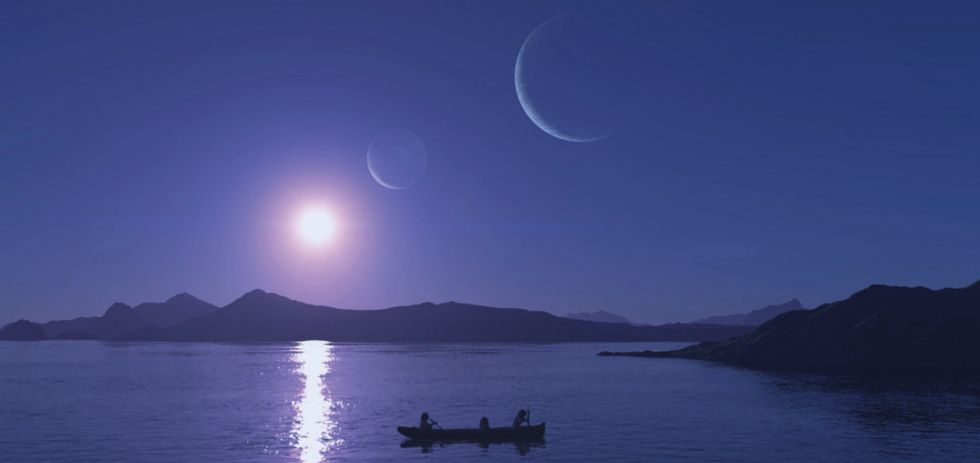
Ivan Cerecina: Coming off its success at this year’s Berlinale, where it picked up the Silver Bear for Best Script, Patricio Guzmán’s The Pearl Button comes to Sydney as the documentary I’m most excited for this year. Guzmán has forged a singular path in documentary filmmaking in a career that has spanned almost 50 years, producing works that are politically engaged and, increasingly, cosmic in scope. After directing a number of films on the history and politics of Chile – including the definitive, three-part document of the 1973 Allende coup and its aftermath, The Battle of Chile – Guzmán’s work has taken an interesting turn in the last decade with an homage to Jules Verne (Mon Jules Verne, 2005) and a poetic blend of astronomy documentary and personal politics (Nostalgia for the Light, 2010). The latter is absolutely stunning and quite unlike anything I’ve ever seen, so I have high hopes for The Pearl Button at SFF.
While I agree with a couple of others here at 4:3 that an Ingmar Bergman retrospective feels like a missed opportunity to give shine to a director more in need of attention, I was very happy to see that The Silence made the cut. Though well-respected in the Bergman catalogue, it certainly doesn’t get as much attention as arthouse Hall-of-Famers The Seventh Seal or Persona and I think it really ought to. Part of the director’s informal “Trilogy of Faith” (which also includes Through a Glass Darkly and Winter Light), it feels like one of his most subtly affecting films, proceeding via surreal image associations rather than the heady dialogue that fills many of his other films. I’m particularly looking forward to seeing Sven Nykvist’s cinematography (maybe Bergman’s darkest film, composition-wise) rendered in its original format and on the big screen, and the opening sequence is probably my favourite Bergman passage.
Jake Moody: Previous SFF iterations have always been strongest around their fringes, with the most memorable picks generally being the ones straight out of left-field (who would have expected a one-shot Iranian murder-mystery to outstrip most of the other films in last year’s competition, for example?). As such, I’m scouring the programme for works which hold sleeper, cult, or oddball promise. Radu Jude’s black-and-white Romanian Western Aferim! seems like such a film, and may work as a great companion piece to the more heralded Slow West, which is liable to return another immersive and obsessive Michael Fassbender performance.
My pick from the doco roster, though, steers away from the usual SFF developing world stronghold in favour of a good old American political piece, in the shape of Robert Gordon and Morgan Neville’s Best of Enemies, about the electric and venal TV debates between notorious anti-establishmentarian Gore Vidal and arch-conservative William F. Buckley in 1968. Being familiar with the “long, hot summer of 1967” background to their exchanges will help anyone looking to catch the film, but won’t be mandatory: watching Buckley go nuts and call Vidal a ‘queer’ on live TV is manic enough political entertainment for anyone.
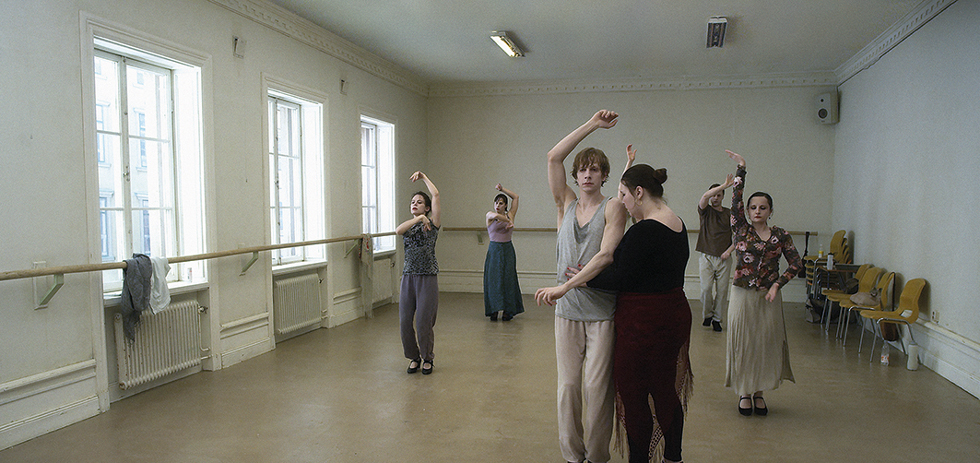
Lidiya Josifova: “The range between humour and horror will be profound,” promises Roy Andersson of his latest, A Pigeon Sat on a Branch Reflecting on Existence, and I am so very ready. Supplying us with the final chapter of his ‘living’ trilogy (for which I’ve already claimed my love in our You Have to See… column), the director returns with his trademark filmic magnifying glass to clarify our follies and strengths. Yet notes on the film across the Internet seem to hint at something darker. Andersson himself has said the word, “Horror” – could this iteration, and final chapter, of his tragicomedy delve a little darker? In any case, the addition of ‘protagonists’ (in the form of two travelling salesmen with bizarre novelty goods) will be an intriguing addition. We’ve never really had one or two main guides through the surreal landscape of an Andersson ‘living’ film – but what better time to start than now?
Renowned Iranian filmmaker Jafar Panahi (The White Balloon, The Circle) has been under a state-sanctioned filmmaking ban for years now, but remains defiant and continues to produce features in his homeland. This year’s festival screens his third film post-ban, Tehran Taxi. He’s no Tom Hardy in Locke, but the film does follow Panahi, a pseudo-taxi driver, as his taxi winds its way through the city streets and picks up various ‘passengers’, a series of actors playing archetypes in Iranian society, with one of the actors Panahi’s own niece. From this, we see a range of views on issues regarding contemporary Iran expressed through Panahi’s dashboard-cam footage. This conceit is accentuated through the meta-framing device that that some of his passengers recognise their driver for the famous director that he is – and others don’t. It’s certainly a rare opportunity to glimpse a film made in such a context, from as talented a filmmaker as Panahi, and not one to be missed.
Grace Sharkey: I love Russell Brand. I do. I have for many years. When I was in high school, I was not so secretly convinced we would get married. While I don’t worship him as much as I once did, I’ll always have a soft spot. Thus, the fact that there TWO different Brand documentaries this fest is filling my jaded heart with joy. Brand: A Second Coming is a documentary about Brand, made by Ondi Timoner. Russell Brand’s life has been documented over and over again. He has two autobiographies. This might seem outrageous for a man under 40, but I promise you, the man has seen some things. I’m not sure if this film will bring anything new to the table, but from what I know about his life, it definitely won’t be boring.
Brand’s own doco, The Emperor’s New Clothes is screening, too. In the last few years, Brand has become more of an activist than a comedian, and here is another big shot at changing the world, it seems. The documentary focuses on the GFC and global economic inequality, but it’s also funny, one assumes. It does have three-time Palme d’Or nominee, Michael Winterbottom, directing it. The combination of Brand + Winterbottom may just work. Brand is certainly channelling Michael Moore, and he is funnier and more charming. I think more people like Russell Brand than care to admit it, and I think these films will be interesting and a little off-center, which is only fitting.
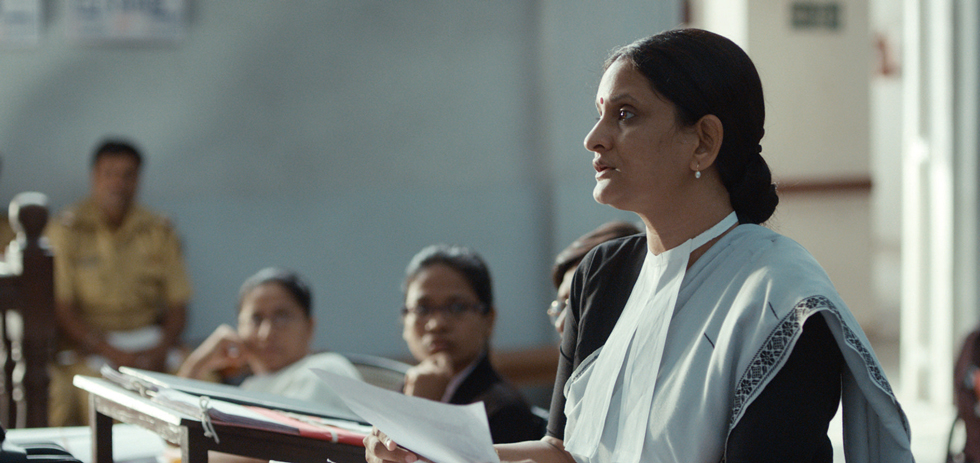
Virat Nehru: I was bitterly disappointed when the two Indian films I was most excited about – Court and Margarita With a Straw didn’t manage to make it to Australian shores. Hence, I’m thankful that SFF picked up Court, which looks to be a long overdue understated piece about the many contrivances of the Indian legal system. Its minimalist tone stands in stark contrast to the extravagant fanfare of the stereotypical ‘Bollywood’ films. Debut director Chaitanya Tamhane has won significant praise for his venture, having established himself as the next generation of young Indian film-makers who are in their own way ‘rebelling’ against conventional sensibilities of Indian cinema by favouring a resurgence of indie cinema. Court has already won the National Award for Best Film in India, but in a cruel irony, Tamhane has admitted in interviews that he expected sedition charges to be filed against him post the release of the film because of its subject matter. There’s a huge national debate on the notion of freedom of speech that’s currently unfolding in India – especially with regards to soft targets such as writers, comedians and film-makers being persecuted for exhibiting their content and Court seems to have arrived at the perfect time to shed light on these matters.
Partho Sen-Gupta has had quite a unique apprenticeship in Indian cinema. On one hand, he’s been involved with big budget Hindi film commercial domestic successes such as Saagar and Mr India. On the other end of the spectrum, he’s also had experience working with Indian indie directors such as Sudhir Mishra. Hence, Partho offers an interesting fusion of Indian commercial and indie sensibilities and he’s shown as such via his short films and his earlier film Let The Wind Blow, which premiered at the Berlin Film Festival back in the early 2000s.9 His latest, Sunrise, deals with the subject of child trafficking in India, and after being blown away by Siddharth at last year’s SFF that dealt with a similar subject, my expectations are quite high for this one.
I’ve always been enamoured by the cinematic vision of director Christophe Honore. He truly cannot be typecast as a director, constantly looking for new ways to experiment with form, content, genre and subject matter. His last film was an extravagant musical that featured at Cannes in 2011. Now, for his latest venture, he drastically changes gears – in updating Ovid’s magnum opus Metamorphoses. The film deserves to be seen for the sheer audacity of attempting such an act. It seems nigh impossible to condense Ovid’s poem into something that’s consumable in terms of a cinematic medium. But the fact that Honore has done so makes me eager to see the final product. This is one of those pieces which fall in the ‘hit or miss’ category, depending on how the film pans out, but it deserves your attention precisely for this reason.
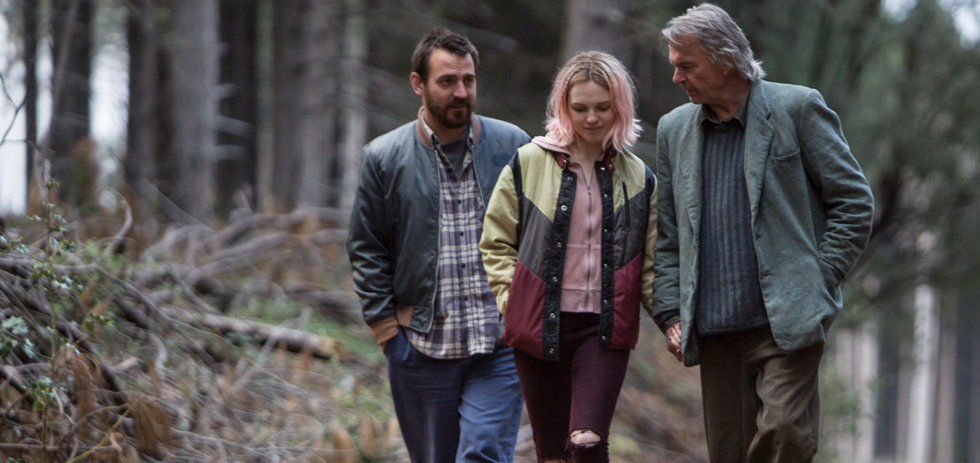
Christian Byers: Simon Stone’s The Wild Duck was staged at the Belvoir Theatre in 2011. It was performed entirely within a glass box, like a terrarium. And it was brilliant. Now the play The Wild Duck has become the film The Daughter by Stone after Stone after Ibsen and it will be another brilliant ‘screen experience’. Since founding the Hayloft Project in 2007, Stone’s theatre work has been a beacon in the gloom in Australian theatre, his heavily devised adaptation of Seneca’s Thyestes still the best play I’ve ever seen. His ensuing work, including adapting and staging Strindberg’s Miss Julie, O’Neill’s Strange Interlude and of all things Ingmar Bergman’s Persona, has been consistently impressive and carefully balanced faithful recreation and idiosyncratic invention. In this, unlike many first-time directors, Stone has a wealth of experience with long-form storytelling, and, with regard to form, Stone has said himself that his first love was always cinema. At the time of The Wild Duck, Stone described it as “not really a play at all, more an endless dolly shot”. Stone’s first foray into film was Reunion in omnibus film The Turning (2012) and in it, an intuitive knack for composition, staging and continuous performance came to the fore in three very well executed long takes over the period of twelve minutes. In that respect, Stone’s theatre background and obvious love of cinema held Reunion, and should hold The Daughter, in good stead. Basically, The Daughter is going to be very, very good.
Header image (L to R): The Forbidden Room, Sunrise, Aferim!, The Look of Silence, Dope. The two figures in the foreground of the image were designed by Leuver Design for the 2015 Sydney Film Festival program guide. Tickets for the festival can be purchased here.
Disclosure: A number of our writers and editors have worked or interned for Sydney Film Festival. Individual disclosures will appear at the bottom of SFF-related news items and essays where appropriate, and will only be included at the bottom of any 2015 reviews if the writer of said review received any financial payment from Sydney Film Festival in the last year.
